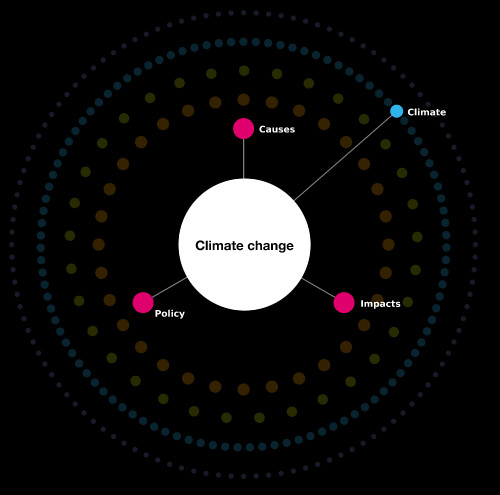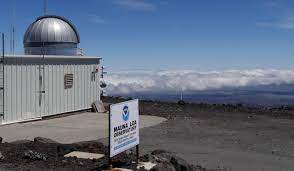What affects the climate of the Earth? Why has the temperature of the Earth stayed approximately the same over very long periods of time, without varying by hundreds of degrees?
The temperature of the Earth can be represented by the level of water in a bucket which has a hole in the bottom and water flowing in from a tap at the top…
Click on the arrow to find out how it works.
The amount of water flowing out of the hole in the bucket is determined by the depth of water in the bucket – the higher the water level, the greater the pressure in the water and the more water is forced out of the hole. So, if you open the tap, the water level rises until the rate water leaves the bucket is again equal to the rate water is flowing in from the tap.
If you close the tap, the water level falls until the rate water leaves the bucket is again equal to the rate water is flowing in.
But how does this relate to the climate?
Our tap pouring water into a bucket with a hole is a simple way of looking at the temperature of the Earth.
The water flowing from the tap represents the energy from the Sun, the water escaping from the hole in the bucket represents the energy the Earth loses to space, and the water level in the bucket represents the temperature of the Earth.
The amount of energy the Earth loses to space is simply determined by the temperature of the Earth’s atmosphere. If the Earth were to get more energy from the Sun the temperature of the atmosphere would rise, just like the water level in the bucket, until the amount of energy it’s losing to space is again equal to the amount of energy it’s getting.
At its simplest level, whether or not the Earth is heating up or cooling down is determined by the difference between the amount of energy the Earth is getting from the Sun and the amount of energy it is losing to space.
Since the Industrial Revolution, the increasing amount of greenhouse gas in the atmosphere has been restricting the amount of energy the Earth is losing to space – as if the hole in the bucket were partially blocked. As a result, the Earth is heating up. If we were to stop increasing the amount of greenhouse gas in the atmosphere, the Earth would eventually (in a few decades) reach a new, constant, warmer, temperature.
It’s worth noting that if you were to leave the tap alone, but suddenly poured another load of water into the bucket in one go, the water level would rise abruptly. The water pressure would also increase abruptly, and so would the flow of water through the hole. As the water level fell back down to its original level, the flow of water through the hole would also slow until the water level stabilised at its original level.
In the same way, if something suddenly adds a lot of heat to the atmosphere (imagine a massive wildfire, maybe) then that heats the atmosphere locally, making it lose more energy to space. As the atmosphere slowly cools down, the energy lost to space also reduces, until the atmosphere returns to the temperature it had before the fire.
Adding heat to the atmosphere does not change the climate. Changing the composition of the atmosphere (for example by adding greenhouse gases), does.
The animations were originally developed by climateprediction.net and The University of Oxford Department for Continuing Education (Technology Assisted Life-long Learning Unit).





